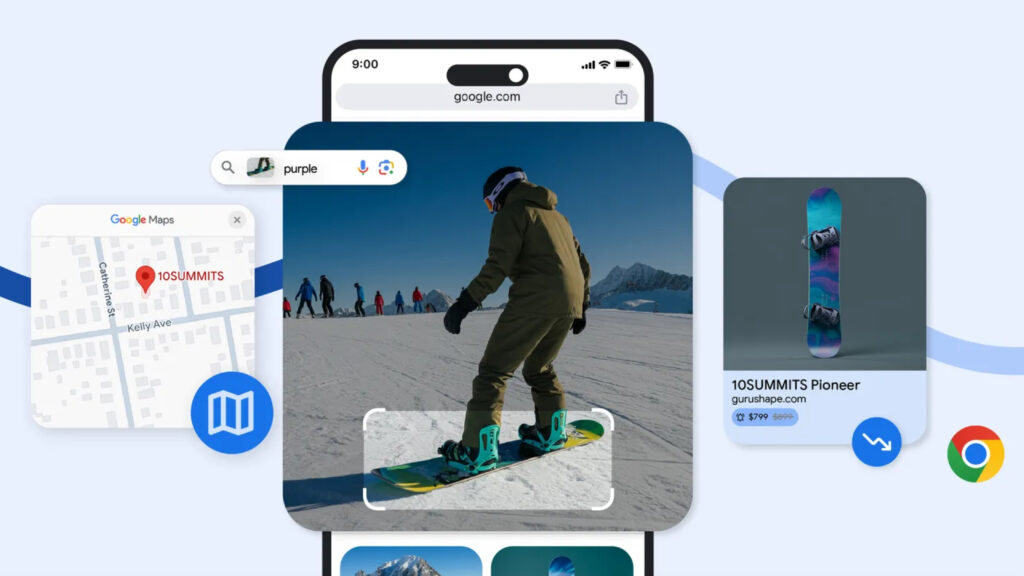Google has unveiled Chrome 131 for iOS, introducing four groundbreaking features that significantly deepen the integration between iPhone users and Google’s suite of services. This latest update represents Google’s most ambitious attempt yet to establish a stronger foothold in Apple’s ecosystem, potentially paving the way for increased platform flexibility among mobile users.
The rollout, which began today, brings several Android-native functionalities to iOS devices, marking a significant evolution in how iPhone and iPad users can interact with Google’s services. At the heart of this update is a sophisticated integration system that bridges the gap between Apple’s traditionally closed ecosystem and Google’s cross-platform services, offering users more choices in how they manage their digital lives.
One of the most significant additions addresses a common pain point for iPhone users: storage management. While Apple typically directs users facing storage constraints toward iCloud subscriptions, Chrome 131 now offers a seamless alternative through direct integration with Google Drive. Users can save files from websites directly to their Google Drive storage, bypassing the need to use device storage as an intermediary. This feature is particularly compelling given Google’s more generous free storage allowance of 15GB compared to Apple’s 5GB iCloud offering.
The update introduces new context menus that streamline the process of saving content to Google’s cloud services. Users can now upload photos directly to Google Photos and save files to a dedicated folder in Google Drive, all without leaving the Chrome browser. This seamless integration challenges the traditional boundaries of iOS’s walled garden approach, offering users more flexibility in how they manage their digital content.
Google Lens functionality receives a substantial upgrade in this release, bringing iOS users up to par with their Android counterparts. The enhanced capability allows for simultaneous searching using a combination of photos, screenshots, and text, significantly expanding the ways users can interact with visual information. For U.S. users, the update also introduces Shopping Insights, a feature that provides comprehensive price history data to help consumers make more informed purchasing decisions.
Perhaps one of the most practical additions is the integration of Google Maps previews directly within Chrome. Users can now quickly view location information with a single tap when encountering addresses on websites, with the option to seamlessly transition to full navigation in Google Maps. This feature, though rolling out gradually over the coming months, represents a direct challenge to Apple Maps’ default status on iOS devices.
The strategic implications of these updates extend beyond mere feature parity with Android. By making its services more accessible and integrated on iOS, Google is creating a potential pathway for iPhone users to become more comfortable with Google’s ecosystem. This familiarity could potentially lower the psychological barriers that often prevent users from switching between mobile platforms.
These new features represent a calculated approach to platform competition. Rather than trying to directly combat Apple’s ecosystem lock-in, Google is creating alternative pathways that allow users to gradually incorporate Google services into their daily workflows. The strategy acknowledges the reality that many users may be hesitant to switch platforms entirely but might be open to adopting individual services that offer compelling advantages.
The timing of this update is particularly significant as it comes amid growing discussions about ecosystem competition and user choice in mobile platforms. By offering iOS users more options for managing their digital lives, Google is positioning itself as a champion of cross-platform flexibility while potentially building a bridge for future platform transitions.
For iPhone users, the practical benefits are immediate and tangible. The ability to seamlessly save content to Google Drive and Photos, combined with enhanced search capabilities and improved mapping integration, offers real improvements to daily workflow efficiency. These benefits come without requiring users to make any dramatic changes to their existing device preferences or usage patterns.
While these features have been standard on Android devices, their arrival on iOS marks a significant shift in how Google approaches platform competition. Rather than accepting the limitations of iOS’s walled garden, Google is actively working to create pathways for deeper integration of its services, potentially reshaping how users think about ecosystem loyalty and platform choice.
As these features roll out globally over the coming months, their impact on user behavior and platform preferences will be closely watched by industry observers. Chrome 131 for iOS may well represent a turning point in how users navigate between competing mobile ecosystems, potentially leading to a more fluid and less platform-dependent mobile computing landscape.
















Add Comment